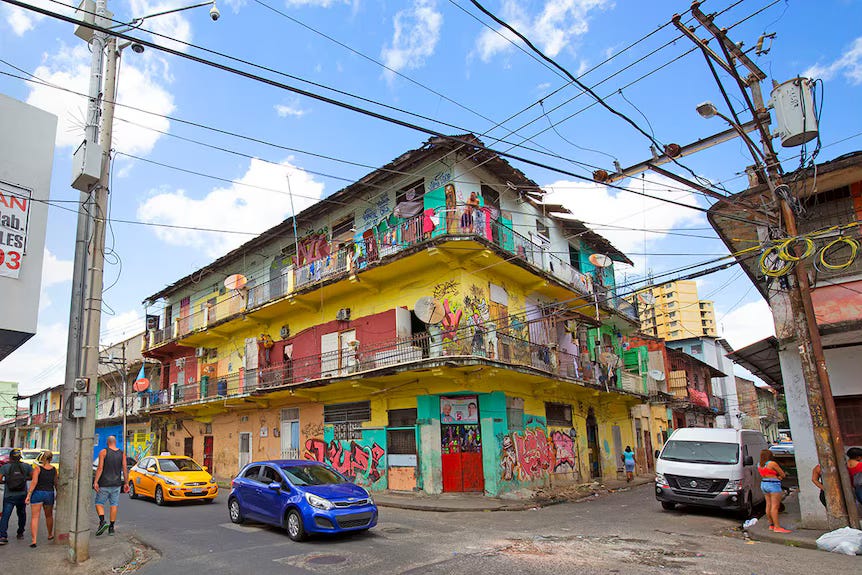Come if you can
About that title "Ven Sí Puedes"
Between "Sal Si Puedes" and "Ven Sí Puedes"
There's a neighborhood in Panama City with a name that stopped me in my tracks the first time I heard it: Sal Si Puedes or "Leave If You Can." It's a place with a rich, complex history in El Chorrillo, one of the city's oldest neighborhoods, where the name itself tells a story of challenge and, perhaps, a subtle warning.
The Meaning Behind "Sal Si Puedes"
In Spanish, "Sal Si Puedes" carries multiple layers of meaning. On its surface, it's a phrase tinged with caution – a neighborhood so labyrinthine, so challenging, that escaping requires both luck and determination. Historically, these areas earned their names from their maze-like streets, where even locals could get disoriented. Some say it was a nod to the difficulty of navigating the steep, narrow passageways that characterized these working-class neighborhoods.
But beneath this practical interpretation lies something deeper. "Sal Si Puedes" neighborhoods exist throughout Latin America – from Chile to Mexico, from Panama to Peru. They emerged as informal settlements, often on the outskirts of cities or in areas deemed undesirable, where marginalized communities created homes and lives despite governmental neglect.
The phrase appears in literature as well, perhaps most famously in Tomás Rivera's seminal 1971 novel "...y no se lo tragó la tierra" ("...And the Earth Did Not Devour Him"), where "Sal Si Puedes" represents both a physical place and the socioeconomic trap that many migrant workers found themselves in – a cycle seemingly impossible to escape.
From Warning to Invitation: "Ven Sí Puedes"
This is where our journey – and the name of this newsletter – finds its meaning. "Ven Sí Puedes" flips the narrative: "Come If You Can." Where "Sal Si Puedes" speaks of limitation and challenge, "Ven Sí Puedes" offers invitation and possibility.
This inversion feels significant to me. It acknowledges that yes, movement requires privilege – the privilege of documentation, resources, time, and often language skills. Not everyone can simply pick up and go. Travel, especially international travel, remains inaccessible to many.
And yet, within whatever constraints we each face, there exists the possibility of movement – whether across oceans or simply across perspectives. "Ven Sí Puedes" acknowledges the barriers while extending an invitation to push against them if possible.
Panama's Dual Reality
Panama City embodies this duality perfectly. Within view of the gleaming skyscrapers of the banking district and the historic, dare I say, gentrified charm of Casco Viejo lies El Chorrillo and its "Sal Si Puedes" section – neighborhoods with challenging histories including the 1989 US invasion that devastated these areas and the gang violence that has developed in the years since.
Learn more about the United States invasion of Panama on December 20th 1989
Today, as Panama continues to position itself as both a global crossroads and an expat haven, these contrasting realities exist side by side. Luxury developments rise while historic neighborhoods fight for preservation. International banking thrives while local communities work to maintain their cultural identity.
For travelers and especially those immigrants... expatriates… considering relocation, understanding this complexity is essential. The Panama that beckons with tax incentives and ocean views is the same Panama with neighborhoods named for the challenge of escape.
The Journey Between
I am drawn to the space between these phrases – between "leave if you can" and "come if you can." This newsletter explores that middle ground: the reality of movement, the privilege of choice, the complexity of place, and the transformative potential of thoughtful and slow travel. What is the slowest way to see a place, meet its people, explore its history, and learn its ways than to actually move there?
Whether you're in the beginning stages of relocating abroad or already in the labyrinthine paperwork process for Panama, our sincere hope is that "Ven Sí Puedes" serves as both an invitation and a reminder – that our ability to move through the world carries responsibility, that the most meaningful journeys acknowledge both privilege and history and that the best travelers remain students of the places they visit.
So yes – come if you can. But come with open eyes, an open mind, and the willingness to see beyond the gleaming surface to the complex, challenging, beautiful reality beyond.
What places have you encountered that carry weighted histories in their names? I'd love to hear your thoughts in the comments below.



